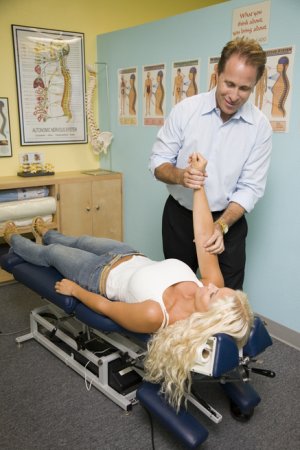By Michael Dorausch, D.C.
An estimated 4 out of 10 adults in the United States, and one in nine children are turning away from traditional medical approaches, and choosing alternatives when seeking care for health problems, like chronic pain. That’s according to the recently published results from a National Institutes of Health and the U.S. Centers for Disease Control and Prevention survey.
 Number one on the list for reasons Americans reported using alternative medicine and complementary techniques, was back pain, something nearly every person in the United States experiences significantly at one time or another, during their lives. Back pain was followed by neck and joint pain, and then arthritis.
Number one on the list for reasons Americans reported using alternative medicine and complementary techniques, was back pain, something nearly every person in the United States experiences significantly at one time or another, during their lives. Back pain was followed by neck and joint pain, and then arthritis.
According to the survey, 38% of adults used some form of complementary and alternative health care in 2007. The last time the government tracked this information was in 2002, and during that time alternative approaches to medical use was reported at 36%.
This was reportedly the first time that the survey also included data on children under the age of 18. Findings were that 12% of children were using alternative approaches to health care. The most common symptoms reported for kids seeking alternatives to traditional medicine were back pain, colds, anxiety, stress, and attention deficit hyperactivity disorder (ADHD).
Regardless of the feelings of health care practitioners on either side of the fence, consumers are most likely utilizing multiple forms of health care, seeking the best results for themselves and their families, whether the approach be chemical or natural. According to the study, in many cases people feel the nontypical approaches work better than medicine and have fewer side effects.
Besides chiropractic techniques, those surveyed reported using acupuncture, massage, herbal medicines, meditation, and natural products such as fish oils.
Dr. Josephine Briggs, director of the U.S. National Center for Complementary and Alternative Medicine at the NIH stated “As I look at this data, what I’m most struck with is how much people are turning to CAM (complementary and alternative medicine) approaches as part of the management of chronic pain conditions, particularly chronic back pain, but also neck pain and musculoskeletal pain and headache.” According to NIH researcher Richard Nahin, chiropractic care, acupuncture and massage therapy were among the techniques used for addressing chronic pain issues.
The most common category of complementary and/or alternative medicine used overall was natural products such as herbal medicines, dietary supplements, other than traditional vitamins and minerals. Since the survey in 2002 was conducted, the use of fish oils has risen while the use of Echinacea (a medicinal plant) has been decreasing.
The government sponsored survey was based on responses from about 23,000 adults and 9500 children nationwide.
planetc1.com-news @ 1:53 pm | Article ID: 1228946047




Comments are closed for this article!